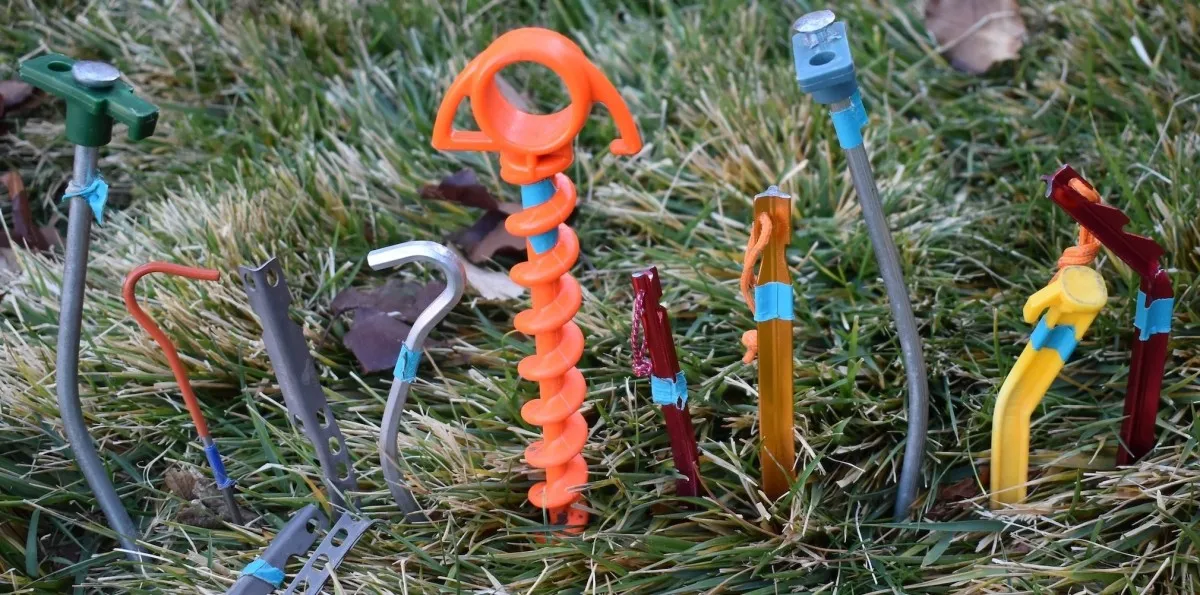
Do All Tents Come with Pegs? Your Complete Guide to Tent Stakes and When to Upgrade
After years of camping across diverse terrains from rocky mountain peaks to sandy beaches, I've learned that while most tents do come with pegs, the quality and suitability of these included stakes can make or break your outdoor experience. This comprehensive guide will help you understand everything about tent pegs, from what comes with your tent to when and why you should consider upgrading for better performance and peace of mind. Whether you're a beginner wondering about your first tent purchase or an experienced camper looking to optimize your setup, you'll find practical insights from someone who's tested stakes in real-world conditions across different environments.
Understanding Tent Pegs: What Comes with Your Tent
The simple answer to "do all tents come with pegs" is that most tents do indeed come with some form of tent stakes included in the package. However, as I discovered during my early camping days in the Colorado Rockies, the quality and adequacy of these included pegs can vary dramatically depending on the manufacturer and price point of your tent.
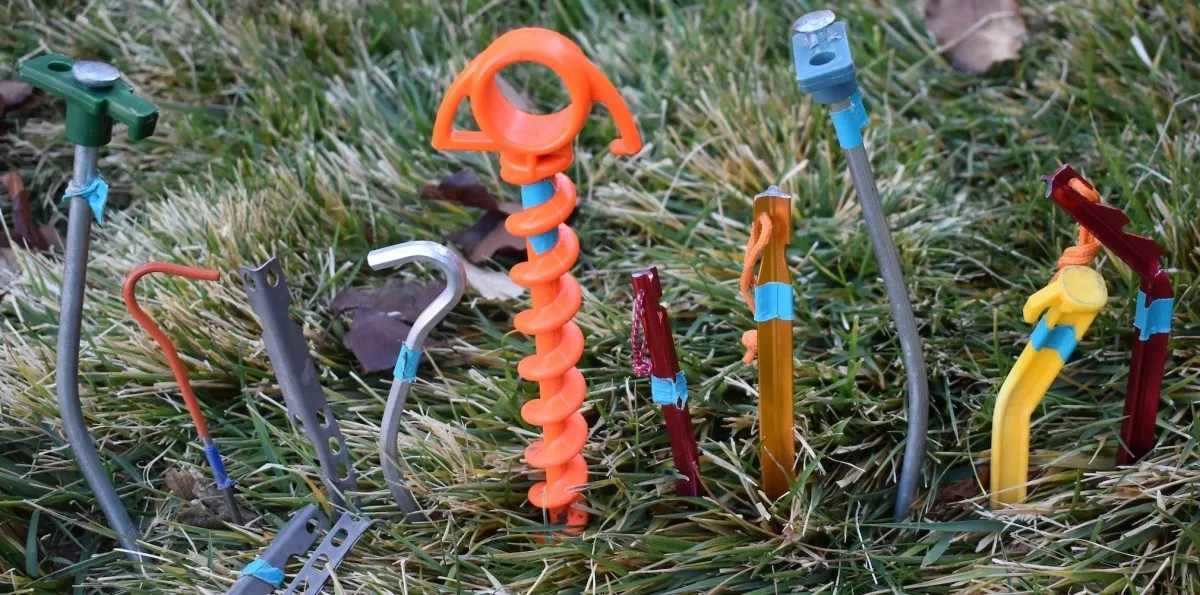
During my recent camping trip to Yellowstone National Park, I observed that budget tents typically come with basic wire stakes that are adequate for soft ground conditions. These standard pegs are usually made from steel or aluminum and feature the classic shepherd's hook design. While they serve their purpose in ideal conditions, I've learned through experience that relying solely on these basic stakes can lead to frustrating situations when weather conditions deteriorate or ground conditions prove challenging.
Premium tents often include better quality stakes, sometimes made from stronger materials like aircraft-grade aluminum or even titanium. However, even high-end tents may not provide enough stakes for all attachment points, particularly for guy lines and storm configurations. This is where understanding your specific needs becomes crucial.
The number of stakes included varies significantly based on tent size and design. A typical 2-person tent might come with 6-8 stakes, while a 4-person family tent could include 12-16 stakes. However, manufacturers often provide the minimum number needed for basic setup, not necessarily enough for optimal performance in challenging conditions. I always recommend checking whether tent stakes are truly necessary for your specific camping style and then planning accordingly.
Pro Tip: Always count the stakes that come with your tent and compare them to the number of attachment points. Many campers discover they need additional stakes only after arriving at their campsite.
Why Quality Matters: The Problem with Standard Tent Stakes
Even though most tents come with pegs, the quality of these included stakes often leaves much to be desired. I learned this lesson the hard way during a windstorm in Utah's Arches National Park, where my tent's original stakes bent and pulled out of the compacted desert soil, leaving me scrambling to secure my shelter with rocks and guy lines.
The primary issues with standard tent stakes include their lightweight construction, which makes them prone to bending when driven into hard ground. Many are made from thin steel that lacks the durability needed for repeated use in challenging conditions. Additionally, the basic shepherd's hook design doesn't provide optimal holding power in loose or sandy soil, which I discovered during a beach camping trip on the Oregon coast.
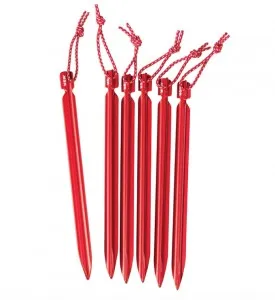
Weight is another significant factor, especially for backpackers. Standard steel stakes are often unnecessarily heavy for their holding power. During my thru-hike sections of the Pacific Crest Trail, I calculated that upgrading to lightweight aluminum stakes saved me nearly half a pound in pack weight while providing superior performance.
Corrosion resistance is frequently overlooked but becomes critical for frequent campers. I've seen countless rusted stakes that became difficult to remove and posed safety hazards. The basic coating on many included stakes isn't sufficient for long-term use, particularly in coastal or humid environments.
The grip design on standard stakes also proves inadequate for easy removal. Without proper pull loops or extraction aids, removing stakes from hard ground can be challenging and sometimes requires additional tools. This is why understanding proper tent stake techniques becomes essential for any serious camper.
Important: Bent or broken stakes in the field can compromise your tent's stability and safety. Always inspect your stakes before each trip and carry spares.
Types of Tent Stakes: Choosing the Right Peg for Your Needs
Understanding the different types of tent stakes available helps explain why the answer to "do all tents come with pegs" isn't simply yes or no – it's about getting the right pegs for your specific camping conditions. Through extensive field testing across various terrains, I've identified several key categories of tent stakes, each with distinct advantages.
Wire Stakes (Shepherd's Hook)
These are the most common stakes included with tents. Made from steel or aluminum wire bent into a hook shape, they work well in soft soil but have limitations in harder ground. During my camping experiences in the Sierra Nevada mountains, I found these adequate for established campgrounds but insufficient for alpine conditions.
Best for: Soft ground, established campgrounds, budget-conscious campers
V-Shaped Stakes
These aluminum stakes feature a V-shaped cross-section that provides better holding power than wire stakes. I've used these extensively in mixed terrain conditions and found them to be excellent all-around performers. They resist bending better than wire stakes while remaining relatively lightweight.
Best for: General camping, mixed terrain, backpacking
Y-Beam Stakes
These feature a Y-shaped profile that maximizes surface area for better holding power. Popular among serious backpackers, these stakes offer an excellent strength-to-weight ratio. I particularly appreciate their performance in loose soil conditions where traditional stakes might pull out.
Best for: Backpacking, loose soil, weight-conscious campers
Screw-In Stakes
These heavy-duty stakes feature spiral threads that screw into the ground, providing exceptional holding power. I've used these for semi-permanent setups and in high-wind conditions. They're particularly valuable for securing heavy-duty tent configurations and larger shelters.
Best for: High winds, semi-permanent setups, large tents
Sand and Snow Stakes
These specialized stakes are designed for loose substrates like sand or snow. They're typically wider and longer than standard stakes, sometimes featuring a deadman anchor design. Essential for beach camping or winter mountaineering, these stakes perform where others fail completely.
Best for: Beach camping, snow camping, loose substrates
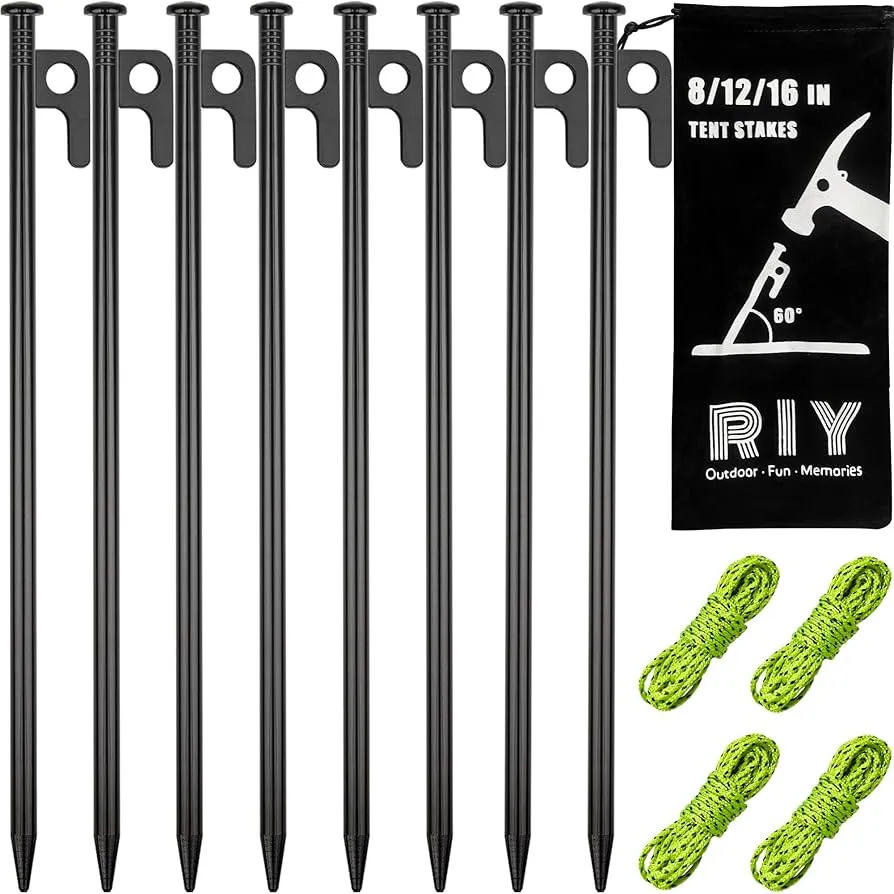
When to Upgrade Your Tent Stakes
While most tents come with basic pegs, knowing when to upgrade can significantly improve your camping experience. My decision to invest in better stakes came after several frustrating encounters with inadequate equipment in challenging conditions. Here are the key indicators that it's time to upgrade from your tent's included stakes.
The first sign you need better stakes is repeated bending or breaking of your current ones. During a camping trip in the Rocky Mountains, I watched three different campers struggle with bent stakes that couldn't penetrate the hard, rocky soil. If you find yourself constantly replacing or straightening stakes, it's time for an upgrade.
Difficulty driving stakes into hard ground is another clear indicator. If you're struggling to get stakes into compacted soil or rocky terrain, heavier-duty options will serve you better. I learned this lesson during a camping trip in Arizona's desert, where the standard stakes simply bounced off the hard-packed earth.
Frequent camping in challenging conditions warrants better equipment. If you camp regularly in windy conditions, on beaches, or in rocky terrain, investing in appropriate stakes pays dividends in setup time and peace of mind. Understanding whether all tents come with adequate pegs for your specific camping style is crucial.
Upgrade Checklist: Bent stakes, difficulty driving into ground, frequent camping in challenging conditions, weight considerations for backpacking, or simply wanting better performance and reliability.
Weight considerations for backpacking also justify upgrades. Standard steel stakes are often unnecessarily heavy for their performance. Switching to lightweight aluminum or titanium alternatives can save significant pack weight while improving functionality.
Corrosion issues indicate the need for better materials. If your stakes are rusting or becoming difficult to clean, upgrading to anodized aluminum or stainless steel options will provide better longevity and performance.
Terrain-Specific Staking Solutions
Different terrains require different approaches to tent staking, and understanding these requirements explains why the standard pegs that come with tents aren't always sufficient. Through camping in diverse environments from alpine meadows to coastal dunes, I've learned that terrain-specific solutions often outperform generic approaches.
For rocky terrain, I've found that shorter, more robust stakes work better than longer, thinner ones. The key is finding gaps between rocks rather than trying to drive through them. During a camping trip in Joshua Tree National Park, I learned to use a combination of stakes and natural anchors, securing guy lines to rocks when stake placement proved impossible.
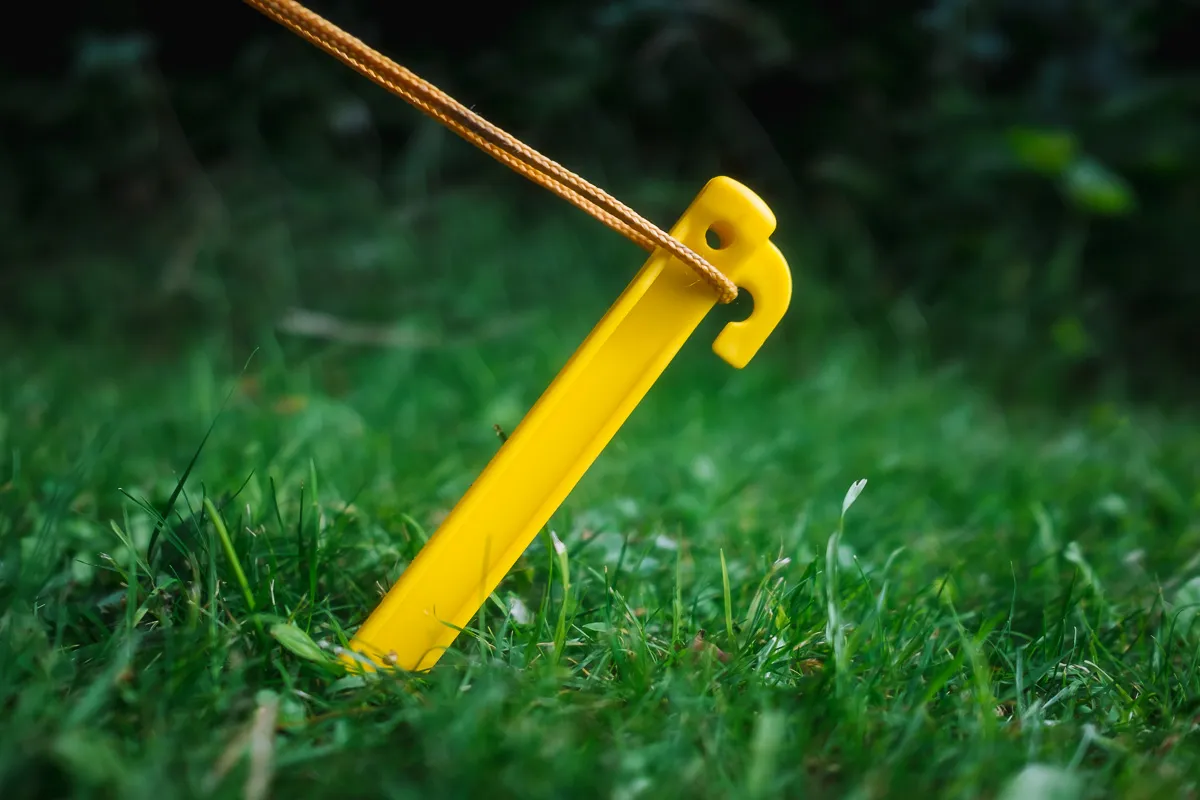
Sandy conditions present unique challenges where standard stakes simply pull out. During beach camping trips along the Pacific Coast, I discovered that longer stakes driven deeper, combined with deadman anchors, provide much better holding power. Sand stakes with broader surfaces distribute load more effectively than narrow wire stakes.
Soft, organic soil like that found in forest environments offers excellent holding power for most stake types, but the key is proper angle and depth. I've learned that driving stakes at a 45-degree angle away from the tent provides optimal holding power in these conditions.
Hard-packed earth, common in established campgrounds, requires robust stakes that can penetrate without bending. This is where the included tent stakes often fail, and upgrading to hardened steel or aircraft-grade aluminum becomes necessary.
Terrain Tip: Always research the ground conditions at your destination and pack appropriate stakes. Carrying multiple types ensures you're prepared for varied conditions.
Best Practices for Using Tent Stakes
Proper technique is crucial regardless of whether you're using the stakes that came with your tent or upgraded alternatives. Through years of camping and observing both successful and failed tent setups, I've identified several best practices that significantly improve stake performance and tent stability.
The angle of stake placement is critical for maximum holding power. I always drive stakes at approximately 45 degrees away from the tent, which provides optimal resistance against pulling forces. This technique, recommended by park rangers I've worked with, significantly improves stake retention in various soil conditions.
Depth matters more than many campers realize. Stakes should be driven until only the hook or attachment point remains above ground. During windy conditions in Wyoming's high plains, I observed that shallow stakes pulled out while properly driven ones held firm throughout the night.
Guy line management is equally important. Keeping guy lines taught but not overstressed prevents stake failure and improves overall tent stability. I've learned to adjust guy lines as weather conditions change, loosening them slightly during hot days when tent fabric expands and tightening them when temperatures drop.
Carrying spare stakes is essential for any camping trip. I always pack at least 4-6 extra stakes beyond what's needed for basic setup. This practice has saved numerous camping trips when stakes were lost, bent, or broken during setup.
Pro Setup: Always test your stake placement by gently pulling on guy lines before finalizing your tent setup. This simple check can prevent failures later.
Stake removal technique prevents damage and makes packing easier. Rather than pulling straight up, I use a slight rocking motion to loosen stakes from compressed soil. This technique, learned from experienced mountaineers, prevents bent stakes and reduces the force required for removal.
Conclusion
To definitively answer the question "do all tents come with pegs" – yes, most tents do come with some form of tent stakes, but the quality, quantity, and suitability of these included pegs varies significantly. Through my extensive camping experience across diverse terrains and conditions, I've learned that while you can start with the stakes included with your tent, upgrading often becomes necessary for optimal performance and reliability.
The key takeaway is that tent stakes are not a one-size-fits-all solution. The basic wire stakes included with most tents work adequately in soft, established campground conditions, but they often fail in challenging terrain or weather. Understanding your camping style, typical destinations, and performance requirements will guide you toward the right staking solution.
Investing in quality tent stakes appropriate for your camping conditions is one of the most cost-effective upgrades you can make to your camping setup. Whether you need lightweight aluminum stakes for backpacking, heavy-duty steel stakes for car camping, or specialized stakes for sand or snow, the right equipment dramatically improves your outdoor experience.
Remember that proper technique is as important as having the right equipment. Learning to drive stakes at the correct angle, managing guy lines effectively, and understanding terrain-specific requirements will improve your tent's stability regardless of which stakes you're using.
Final Recommendation: Start with your tent's included stakes to learn basic techniques, then upgrade based on your specific camping needs and experiences. Quality stakes are an investment in safer, more comfortable camping.
For more detailed information about tent accessories and camping equipment, explore our comprehensive guides on tent setup, maintenance, and optimization. Happy camping, and may your stakes always hold firm!

